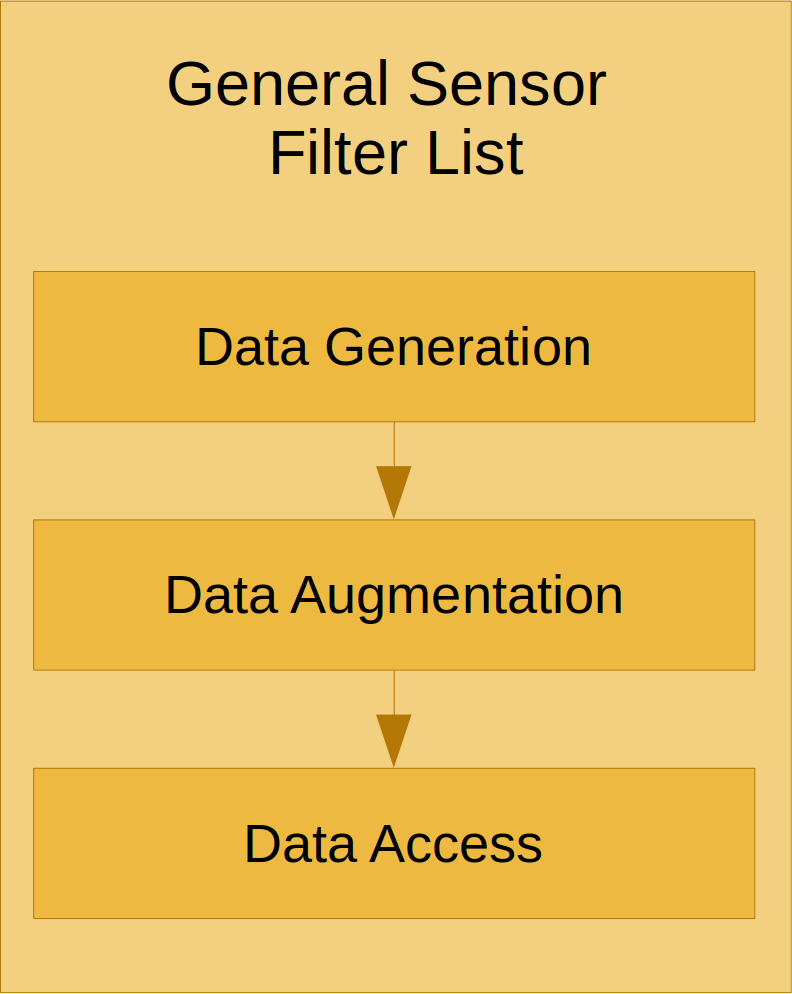The Chrono::Sensor module provides support for simulating RGB cameras, lidar, GPS, and IMU within a Chrono simulation. Sensors are objects that are attached to Chrono Bodies(ChBody). Chrono::Sensor is currently compatible with the core rigid body simulation in Chrono including Chrono::Vehicle.
Detailed overview of Chrono::Sensor.
How the sensor system is setup (more examples can be found in the sensor demos)
Chrono::Sensor design considerations
Since dynamic chrono simulations typically have a higher update frequency than sensors (dynamics: order 1kHz; sensors: 10-100Hz), the sensor framework uses a separate thread to manage the data curation.
Chrono::Sensor can leverage multiple render threads each managing a separate GPU for simulating a group of sensors. This is particularly useful for scenarios with multiple agents and numerous sensors that operate at various update frequencies.
Each sensor has a filter graph which users can extend to customize the computation pipeline for modeling specific sensor attributes or configuring specific data formats.
How key frames are used
Keyframes are a used for generating time-dependent effects such as motion blur on a camera and scanning effects in a lidar. These keyframes are time-stamped transforms of objects in the dynamic scene. When using motion blur or scanning time on the camera or lidar, the number of keyframes that Chrono::Sensor should save must be set using the following which tells Chrono::Sensor the timestep the dynamics will be advanced at as well as the longest time window for which a sensor will be collecting data.
Loading sensor models from JSON Files
Reference Frames and Relative Attachment Positions
Each Chrono sensor defaults to Z-up, X-forwad, and Y-left to match a vehicle ISO reference frame. For an RGB camera, this means that the z-axis points vertically in the image plane, the y-axis points left in the image plane, and the x-axis points into the image plane. For lidar, the x-axis point along rays with zero vertical angle and zero horizontal angle



